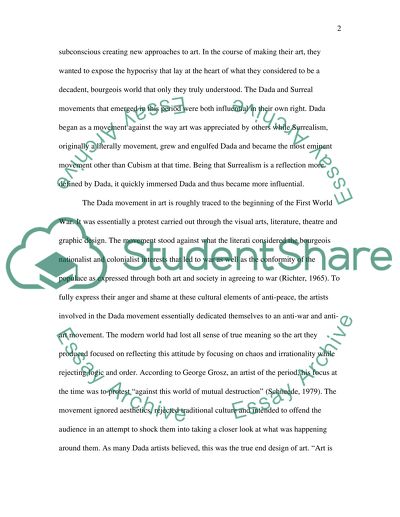Cite this document
(“Dada Vs. Surrealism Term Paper Example | Topics and Well Written Essays - 1250 words”, n.d.)
Dada Vs. Surrealism Term Paper Example | Topics and Well Written Essays - 1250 words. Retrieved from https://studentshare.org/visual-arts-film-studies/1574554-dada-vs-surrealism
Dada Vs. Surrealism Term Paper Example | Topics and Well Written Essays - 1250 words. Retrieved from https://studentshare.org/visual-arts-film-studies/1574554-dada-vs-surrealism
(Dada Vs. Surrealism Term Paper Example | Topics and Well Written Essays - 1250 Words)
Dada Vs. Surrealism Term Paper Example | Topics and Well Written Essays - 1250 Words. https://studentshare.org/visual-arts-film-studies/1574554-dada-vs-surrealism.
Dada Vs. Surrealism Term Paper Example | Topics and Well Written Essays - 1250 Words. https://studentshare.org/visual-arts-film-studies/1574554-dada-vs-surrealism.
“Dada Vs. Surrealism Term Paper Example | Topics and Well Written Essays - 1250 Words”, n.d. https://studentshare.org/visual-arts-film-studies/1574554-dada-vs-surrealism.


